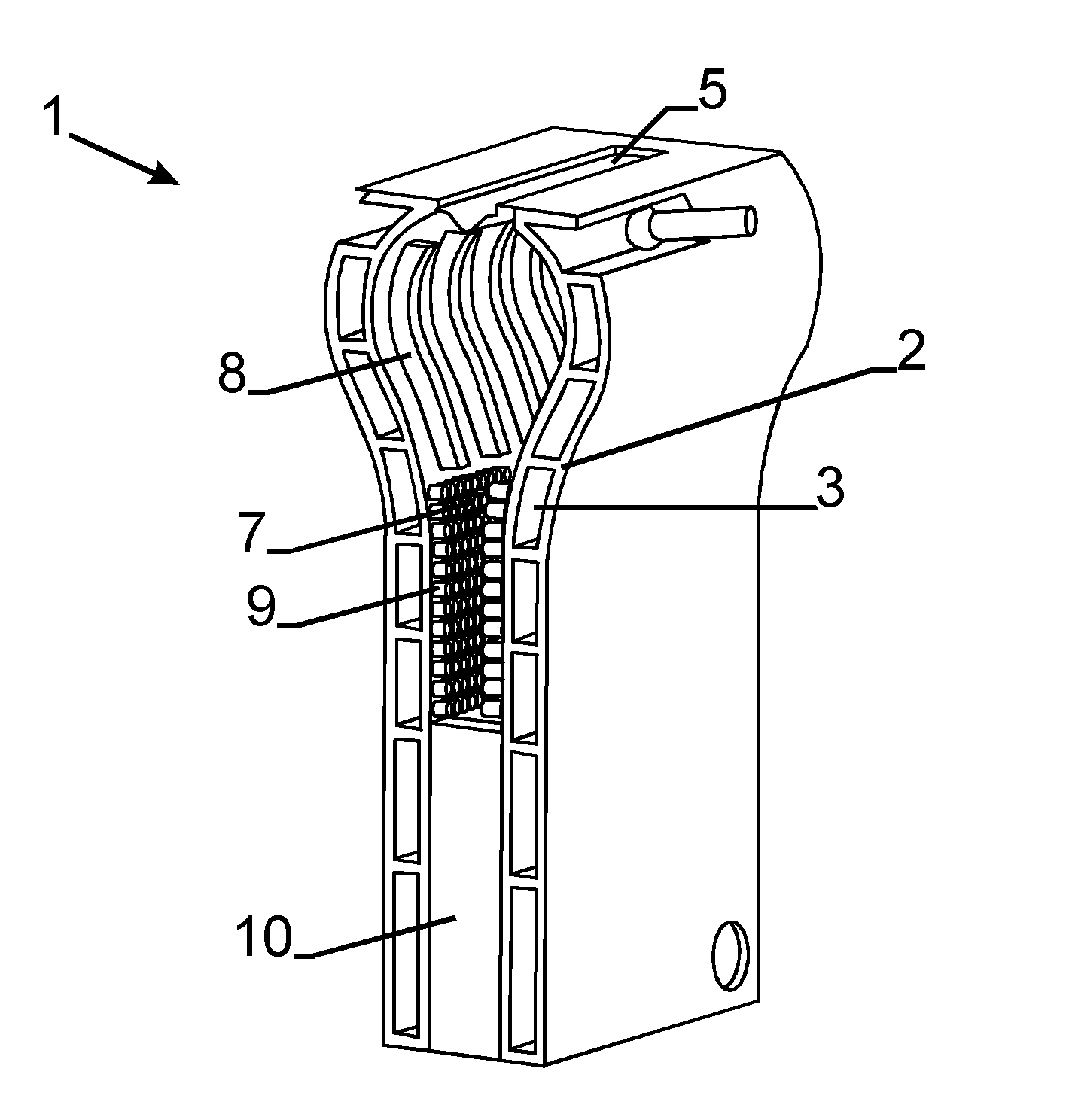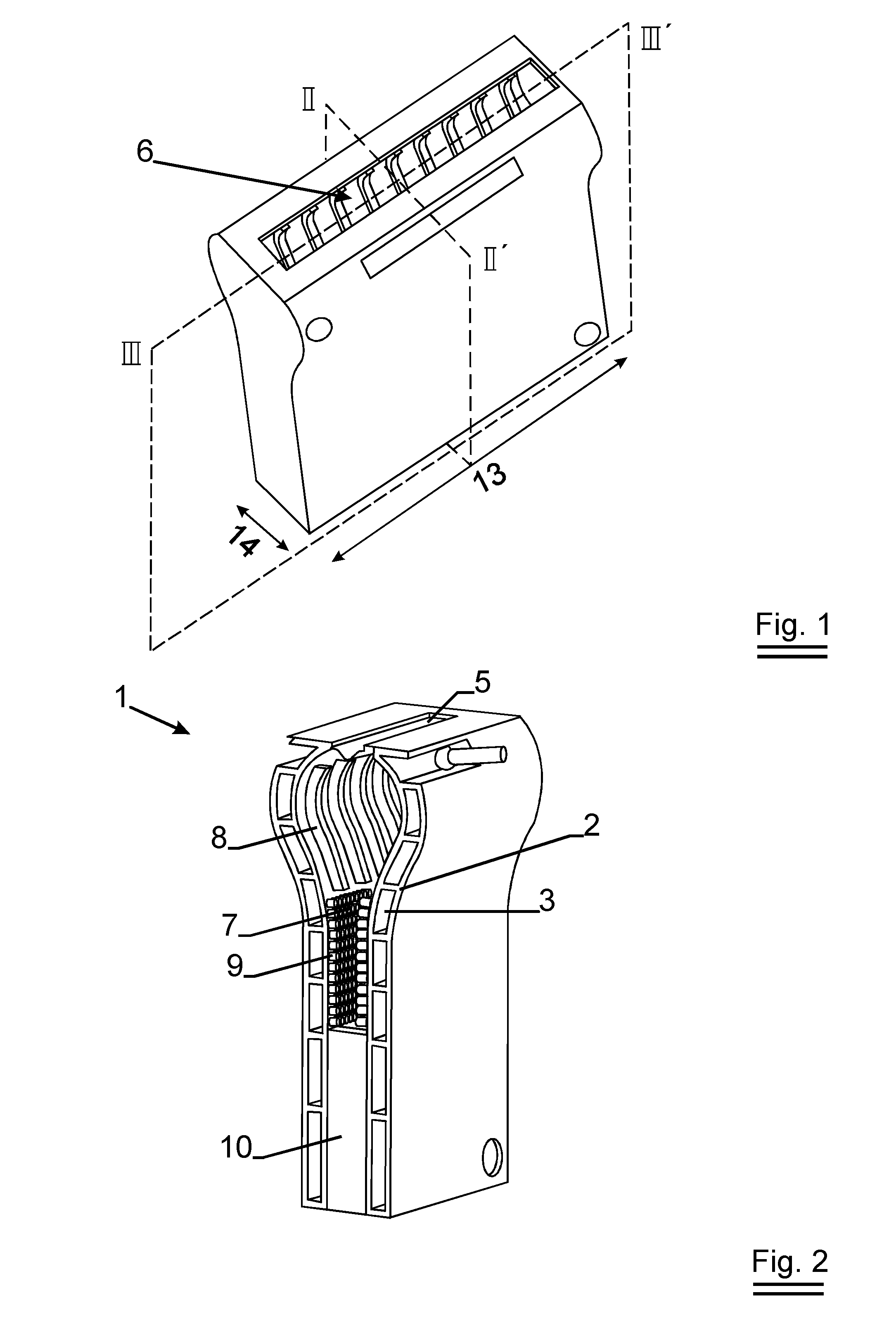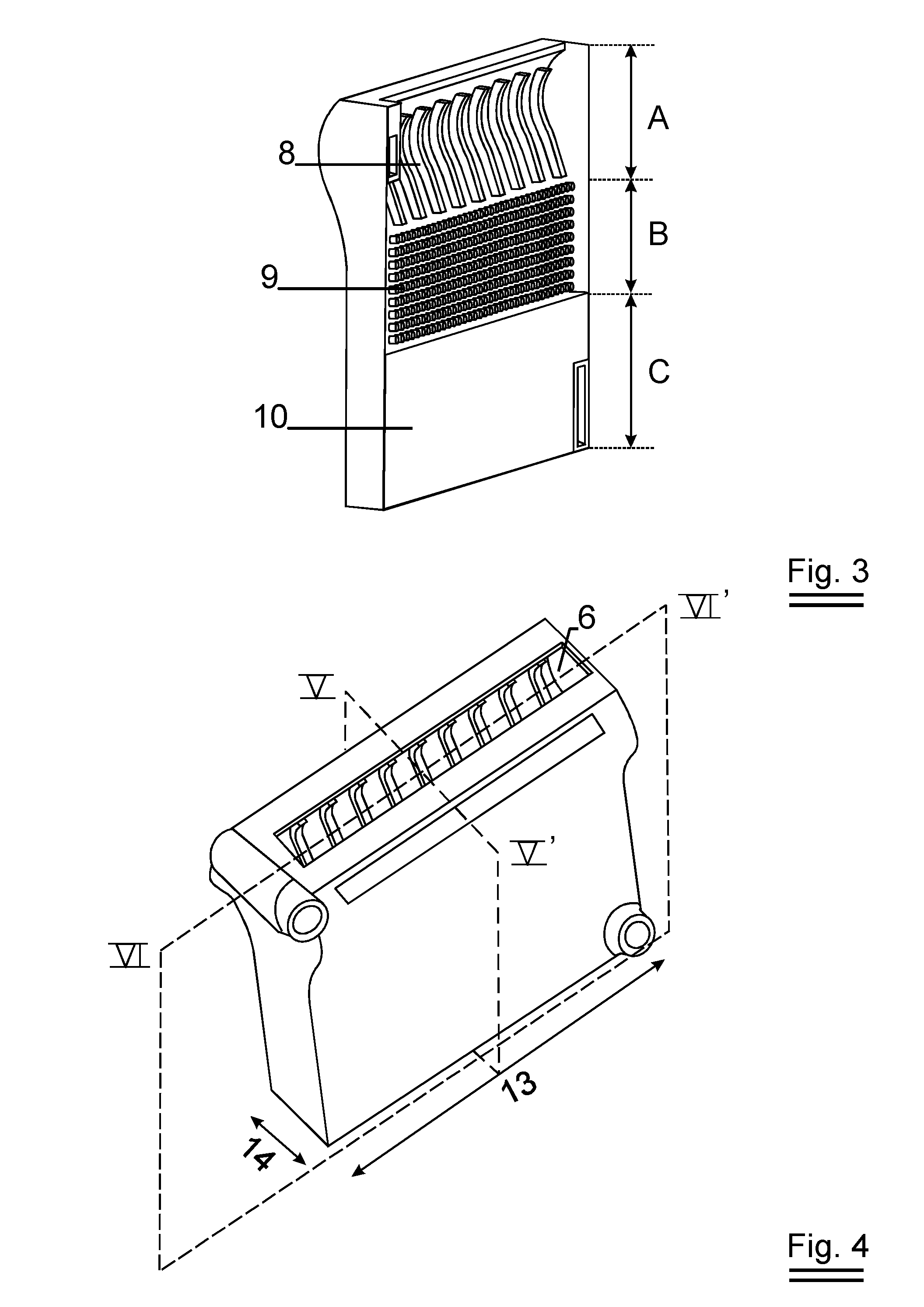Metallic porous body incorporated by casting into a heat exchanger
a heat exchanger and porous body technology, applied in the direction of water-tube boilers, steam boiler components, water-tube boilers, etc., can solve the problems of high scrap and waste, inability to use such a heat exchanger element on its own in the boiler, and insufficient effective quality of these bonds, etc., to achieve low weight and high output
- Summary
- Abstract
- Description
- Claims
- Application Information
AI Technical Summary
Benefits of technology
Problems solved by technology
Method used
Image
Examples
Embodiment Construction
[0054]The present invention will be described with respect to particular embodiments and with reference to certain drawings but the invention is not limited thereto but only by the claims. The drawings described are only schematic and are non-limiting. In the drawings, the size of some of the elements may be exaggerated and not drawn on scale for illustrative purposes. The dimensions and the relative dimensions do not necessarily correspond to actual reductions to practice of the invention.
[0055]FIGS. 1, 2 and 3 show an exemplary embodiment of the heat exchanger 1 according to the invention. Heat exchanger 1 is manufactured as a co-casting substantially from aluminium. The heat exchanger comprises a number of walls 2, which walls enclose on one side a water carrying channel 3 and on the other side a flue gas draft 7. The flue gas draft 7 extends from the burner space 6. The burner space 6 is intended for accommodating a burner. Preferably, the burner is a metal fiber burner membrane...
PUM
| Property | Measurement | Unit |
|---|---|---|
| length | aaaaa | aaaaa |
| porosity | aaaaa | aaaaa |
| porosity | aaaaa | aaaaa |
Abstract
Description
Claims
Application Information
 Login to View More
Login to View More - R&D
- Intellectual Property
- Life Sciences
- Materials
- Tech Scout
- Unparalleled Data Quality
- Higher Quality Content
- 60% Fewer Hallucinations
Browse by: Latest US Patents, China's latest patents, Technical Efficacy Thesaurus, Application Domain, Technology Topic, Popular Technical Reports.
© 2025 PatSnap. All rights reserved.Legal|Privacy policy|Modern Slavery Act Transparency Statement|Sitemap|About US| Contact US: help@patsnap.com



